Search results for "teemu manninen"
Markku Kuisma & al.: Hulluja päiviä, huikeita vuosia. Stockmann 1862–2012 [Crazy days, amazing years. Stockmann 1862–2012]
29 March 2012 | Mini reviews, Reviews
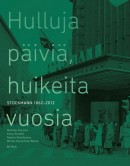 Markku Kuisma & Anna Finnilä & Teemu Keskisarja & Minna Sarantola–Weiss
Markku Kuisma & Anna Finnilä & Teemu Keskisarja & Minna Sarantola–Weiss
Hulluja päiviä, huikeita vuosia. Stockmann 1862–2012
[Crazy days, amazing years. Stockmann 1862–2012]
Helsinki: Siltala, 2012. 532 p., ill.
ISBN 978-952-234-086-3
€37.90, hardback
Also available in English- and Swedish-language editions:
Crazy days, amazing years. Stockmann 1862–2012
Galna dagar, svindlande tider. Stockmann 1862–2012
The largest department store in the Nordic countries, whose current building was completed in 1930 to a design by the architect Sigurd Frosterus, is celebrating its 150th birthday. The Akateeminen Kirjakauppa (Academic Bookstore), owned by Stockmann, is the biggest bookshop in the Nordic countries. The shop founded by the German-born H.F.G. Stockmann has grown into an international business, trading in 14 countries (including Russia, where it has stores in St Petersburg and Moscow). Now quoted on the Finnish stock exchange, Stockmann, owned by a conglomerate of families and foundations, has survived recessions, financial crises and wars. In the 19th century Stockmann was considered an expensive shop for gentlefolk, but as a result of growing competition it has been forced to focus strongly on a diverse concept of service. For decades one of the capital’s best-known meeting places has been ‘under the clock’, outside the main entrance of the department store. The book’s writers are historians from various fields. The generously illustrated work offers new information about the history of trade and the city.
Science book of the year
13 January 2011 | In the news
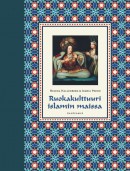 A book on Islamic cuisine and food culture by Helena Hallenberg and Irmeli Perho has won the prize for the Finnish science book of the year (Vuoden tiedekirja), worth €10,000. The prize is awarded by the Suomen Tiedekustantajien Seura, Finnish Science Publishers’ Association, and Tieteellisten seurain valtuuskunta, Federation of Finnish Learned Societies.
A book on Islamic cuisine and food culture by Helena Hallenberg and Irmeli Perho has won the prize for the Finnish science book of the year (Vuoden tiedekirja), worth €10,000. The prize is awarded by the Suomen Tiedekustantajien Seura, Finnish Science Publishers’ Association, and Tieteellisten seurain valtuuskunta, Federation of Finnish Learned Societies.
Ruokakulttuuri islamin maissa (‘Food culture in Islamic countries’, Gaudeamus) explores both cultural and culinary history in the Near East and other Islamic countries since the sixth century, from the Prophet Muhammad to this day – and yes, the book also contains recipes. Both the authors are academics: Hallenberg is a scholar of Islamic saints and Chinese Muslims’ ideas of health, while Perho specialises in Islamic history of ideas and society.
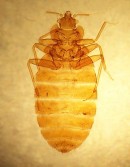
Cimex lectularius: the bedbug. Photo: Wikipedia
And a honorary mention, worth €2,500, was awarded to a large work, with excellent illustrations, on Heteroptera, an extensive family of bugs, one of which is the bedbug – luckily unknown to most of us. The vast majority of people have no idea, either, of the fact that there are 22 endangered species of these bugs in Finland, the home of 507 different representatives of the Heteroptera family. So, Suomen luteet – johdatus luteiden mielenkiintoiseen maailmaan by Teemu Rintala and Veikko Rinne (‘The bugs of Finland – an introduction to the interesting world of the Heteroptera’, Tibiale) is a lively proof of the amazing biodiversity of Finland.
The Finlandia prizes: Non-fiction, Junior
28 November 2013 | In the news

Ville Kivimäki. Photo: Pertti Nisonen
The Finlandia Prize for Non-Fiction 2013, worth €30,000, was awarded on 21 November to the historian Ville Kivimäki for his book Murtuneet mielet. Taistelu suomalaissotilaiden hermoista 1939–1945 (‘Broken minds. The battle ofor the nerves of Finnish soldiers 1939–1945’, WSOY).
The other works on the shortlist of six were as follows: 940 päivää isäni muistina (‘940 days as my father’s memory’, Teos; a book on Alzheimer’s disease) by Hanna Jensen, Kokottien kultakausi: Belle Epoquen mediatähdet modernin naiseuden kuvastimina (‘The golden era of the cocottes: the media stars of Belle Epoque as mirrors of modern femininity’, Finnish Literature Society) by Harri Kalha, Viipuri 1918 (‘Vyborg 1918’, Siltala) by Teemu Keskisarja, Suomi öljyn jälkeen (‘Post-oil Finland’, Into) by Rauli Partanen, Harri Paloheimo and Heikki Waris and Vapaalasku – tieto, taito, turvallisuus (‘Freestyle – knowledge, skill, safety’, Kustannus Oy Vapaalasku) by Matti Verkasalo, Jarkko-Juhani Henttonen and Kai Arponen.
The prize-winner was chosen by the director of the Ateneum Art Museum, Maija Tanninen–Mattila. In her celebratory speech she said: ‘The symptoms of many psychologically disturbed soldiers remained untreated during the war. For many, their symptoms appeared only after the war. Their experiences have remained unexpressed in language, the history of those who lack history. Ville Kivimäki has given voice to these experiences… and succeeded in writing a book that speaks across the generations.’
In his acceptance speech Ville Kivimäki (born 1976) commented: ‘The great majority of the war generation is now dead, and the words of a youngish scholar cannot, even when successful, reach those traumatic experiences whose depth we can never fully understand. But all the same, I would like to take this opportunity to say something that should have been said years ago: the psychological injuries of the war were war wounds in exactly the same sense as physical ones. In the end anyone could suffer a psychological breakdown.’
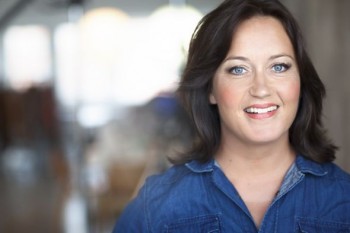
Kreetta Onkeli. Photo: Jouni Harala
The Finlandia Junior Prize 2013 was awarded on 26 November, also worth €30,000. It went to Kreetta Onkeli for her book Poika joka menetti muistinsa (‘The boy who lost his memory’, Otava).
Arto, 12, gets such a massive fit of laughter that he loses his memory and needs to find his identity and his home in contemporary Helsinki.
The winner was chosen from the shortlist of six by Jarno Leppälä, a media personality and member of the popular stunt group Duudsonit, the Dudesons. At the award ceremony he said:
‘Poika joka menetti muistinsa is, in my opinion, a well-written story about how young people in society are put on the same starting line and expected to do equally well in all circumstances – often irrespective of the fact that their starting points may actually be very different, and completely independent of the young people themselves.’
Kreetta Onkeli (born 1970) explained in her award speech how her aim was to write a proper, old-fashioned novel for children: ‘Not hundreds of pages of magic tricks but ordinary, real contemporary life that children could identify with.’ In her opinion the current, massive trend of fantasy has narrowed the scope of children’s literature.
The following five books made it on to the shortlist: Poika (‘The boy’, Like), about a boy who feels he was born in the wrong gender by Marja Björk, Hipinäaasi, apinahiisi (onomatopoetic pun, ‘Donkeymonkey’, Tammi), about bullying and friendship, written by Ville Hytönen and illustrated by Matti Pikkujämsä, Isä vaihtaa vapaalle (‘Father on his own time’, WSOY), an illustrated story about children with too busy parents, written by Jukka Laajarinne and illustrated by Timo Mänttäri, Aapine (‘ABC’, Otava), an illustrated primer written by Heli Laaksonen in her own south-western dialect and illustrated by Elina Warsta and Vain pahaa unta (‘Just a bad dream’, WSOY) by graphic designer and writer Ville Tietäväinen and his daughter Aino, a book on a child’s nightmares.
Finlandia literary prizes are awarded by Suomen Kirjasäätiö, The Finnish Book Foundation, established in 1983.
The first Finlandia Prize for Fiction was awarded in 1984. This year it will be announced on 3 December.
Journey to the first palm tree
16 October 2014 | Fiction, Prose
Teemu is a fat, desperate middle-aged man who’s had it with life – he drives his old Lada to Spain, where he intends to commit suicide by letting himself be trampled to death by bulls in the Pamplona bullrun. (However, there is a chance of this tragedy being cancelled, thanks to a tenacious hitch-hiker, female.) An extract from the novel Särkyvää (‘Fragile’, Tammi, 2014)
When I was seventeen, I yearned to leave behind the small town where I grew up. I heard the owl hooting in the forest: go to Europe.
I heard the dirt-track gravel crunching beneath my shoes: run, lad, run.
The birch in the yard rustled and whispered: if you spend one more summer hanging around the garden of your childhood, you’ll stay here forever.
A frog in the ditch gave a stern croak: look at your father; if you don’t escape you’ll end up an old codger just like him.
Even the smoke twirling up from the sauna chimney spoke to me in billows: I’ll show you the right direction, head south, and don’t stop until you see the first camel. More…
In pursuit of a conscience
19 March 2012 | Drama, Fiction
‘An unflinching opera and a hot-blooded cantata about a time when the church was torn apart, Finland was divided and gays stopped being biddable’: this is how Pirkko Saisio’s new play HOMO! (music composed by Jussi Tuurna) is described by the Finnish National Theatre, where it is currently playing to full houses. This tragicomical-farcical satire takes up serious issues with gusto. In this extract we meet Veijo Teräs, troubled by his dreams of Snow White, who resembles his steely MP wife Hellevi – and seven dwarves. Introduction by Soila Lehtonen
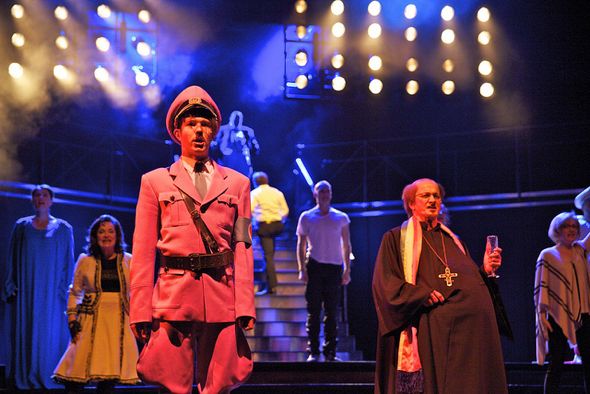
Dictators and bishops: Scene 15, ‘A small international gay opera’. Photographs: The Finnish National Theatre / Laura Malmivaara, 2011
CAST OF CHARACTERS
Veijo Teräs
Hellevi, Veijo’s wife and a Member of Parliament
Hellevi’s Conscience
Rebekka, Hellevi and Veijo’s daughter
Moritz, Hellevi and Veijo’s godson
Agnes af Starck-Hare, Doctor of Psychiatry
Seven Dwarves
Tom of Finland
Atik
The Bishop of Mikkeli
Adolf Hitler
Albert Speer
Josef Stalin
Old gays: Kale, Jorma, Rekku, Risto
Olli, Uffe,Tiina, Jorma: people from SETA [the Finnish LGBT association]
Second Lieutenant, Private Teräs, the men in the company
A Policeman
Big Gay, Little Gay, Middle Gay
William Shakespeare
Hermann Göring
Hans-Christian Andersen
Teemu & Oskari, a gay couple
The Apostle Paul
Father Nitro
Winston Churchill
SCENE ONE
On the stage, a narrow closet.
Veijo Teräs appears, struggling to get out of the closet.
Veijo Teräs is dressed as a prince. He is surprised and embarrassed to see that the audience is already there. He seems to be waiting for something.
He speaks, but continues to look out over the audience expectantly.
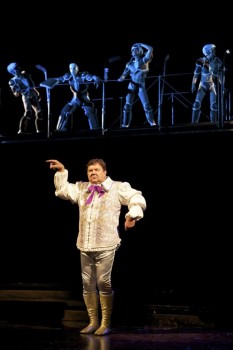
Snow White's spouse, Veijo (Juha Muje), and the dwarves. Photo: Laura Malmivaara, 2011
VEIJO
This outfit isn’t specifically for me, because… I mean, it’s part of this whole thing. This Snow White thing. I’m waiting for the play to start. Just like you are. My name is Veijo Teräs and I’m playing the point of view role in this story. Writers put point of view roles like this in their plays nowadays. They didn’t use to.
Just to be clear – this isn’t a ballet costume. I’m not going to do any ballet dancing, but I won’t mind if someone dances, even if it’s a man. Particularly if it’s a man. But I don’t watch. Ballet, I mean. Not at the opera house, or on television, or anywhere, and I have no idea why we had to bring up ballet – or I had to bring it up – because this is a historical costume, so it’s appropriate. This is what men used to wear, real men like Romeo and Hamlet, or Cyrano de Bergerac. But we in the theatre these days have a hell of a job getting an audience to listen to what a man has to say when he’s standing there saying what he has to say in an outfit like this. People get the idea that it’s a humorous thing, but this isn’t, this Snow White thing, where I play the prince. Snow White is waiting in her glass casket, she died from an apple, which seems to have become the Apple logo, Lord knows why, the one on the laptops you see on the tables of every café in town. More…
